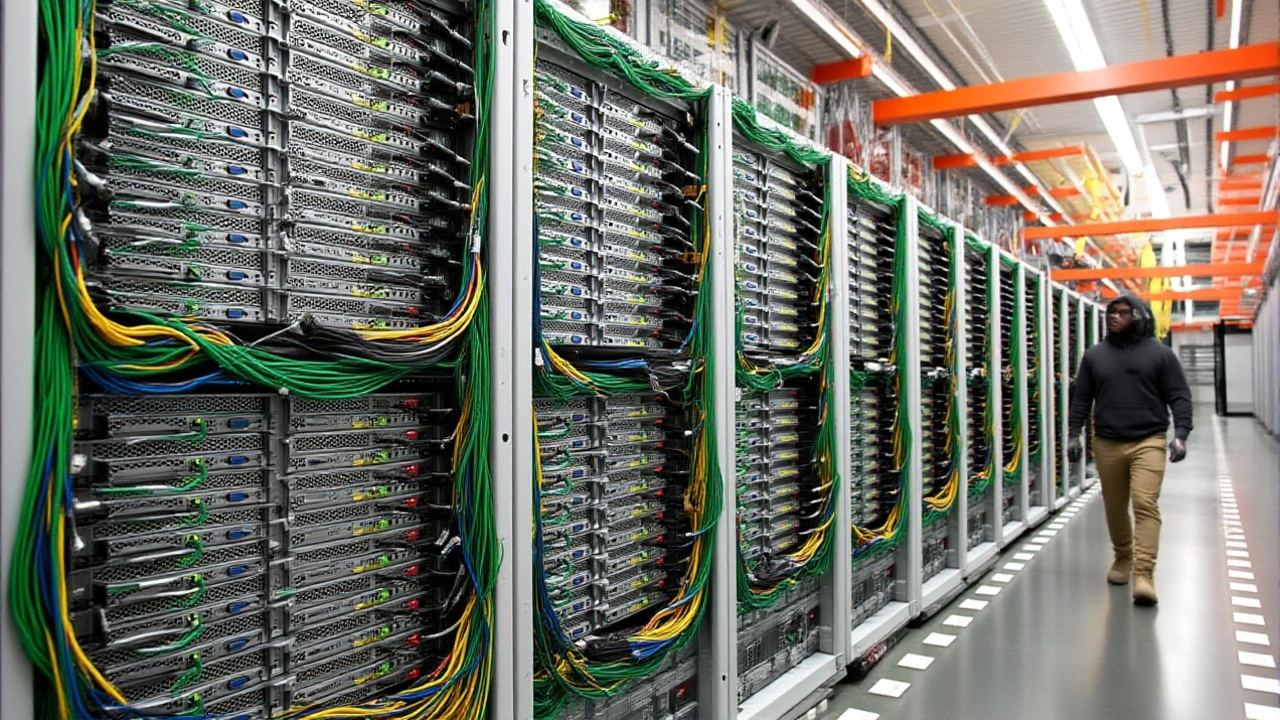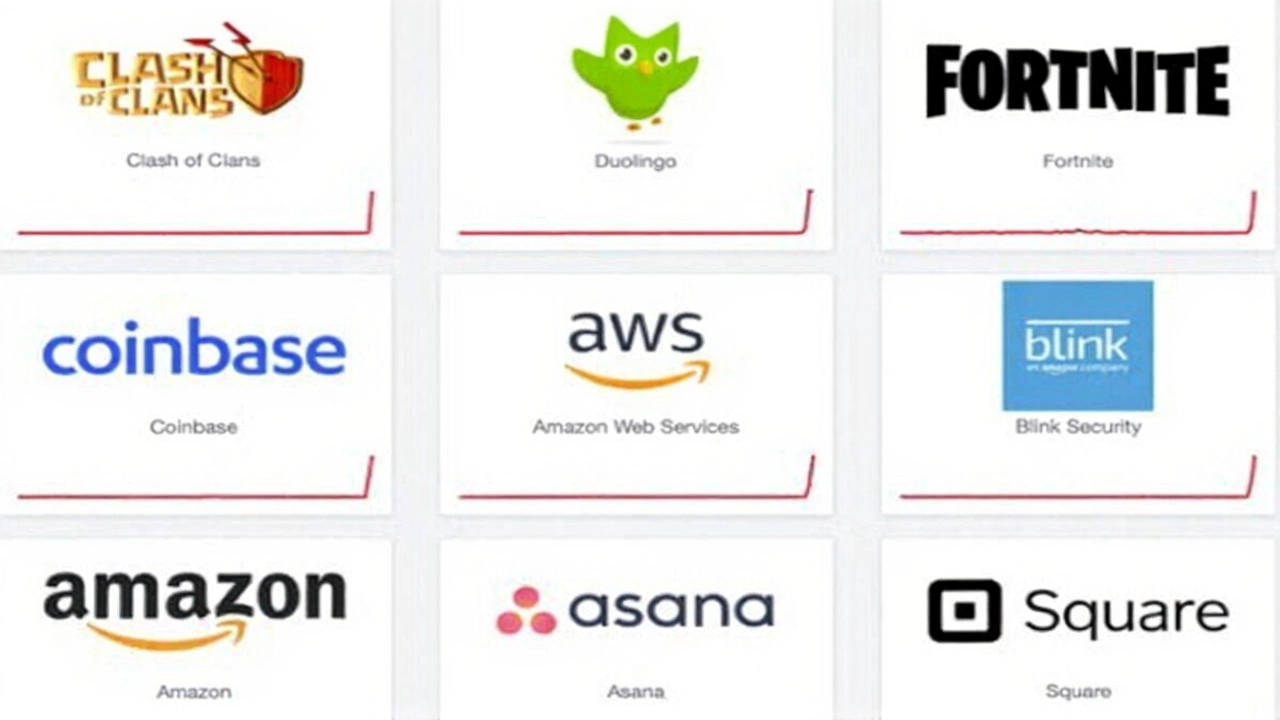When Amazon Web Services went dark early Monday, October 20, 2025, the ripple effect was immediate: students saw Canvas error screens, designers couldn’t launch Photoshop, and video calls on Zoom choked on static.
The cascade began around 08:15 UTC, when a core networking component in the AWS Outage of October 20, 2025multiple global regions started throwing errors. By mid‑morning, the problem had spilled into dozens of third‑party services that rely on AWS’s elastic compute and storage layers.
What Went Wrong? A Quick Technical Snapshot
According to the AWS Status page, the outage traced back to a misconfigured load‑balancer that throttled traffic across several Availability Zones. That misconfiguration triggered a feedback loop, overwhelming internal health‑check mechanisms and effectively black‑holing API calls.
In plain English, it was as if a traffic cop suddenly decided to close every crosswalk in a busy city—cars stopped, pedestrians got stuck, and the whole system ground to a halt.
Institutions Hit Hard: Rutgers University’s Response
At Rutgers University in New Brunswick, New Jersey, the Office of Information Technology (OIT) scrambled to keep students informed. Rutgers OIT posted a series of alerts on its dashboard, urging faculty to switch to offline materials and directing users to check the AWS status page for live updates.
"We're monitoring the situation 24/7 and will provide alternative access methods where possible," said Mike Grayson, associate vice president of IT at Rutgers. "Our priority is minimizing disruption to coursework and research."
Canvas, the learning management system powered by Instructure, displayed a classic "Service Unavailable" message for thousands of students trying to submit assignments. The Instructure status page confirmed that the issue stemmed from its AWS backend.
Other Services Feeling the Heat
- Zoom – video conferences dropped mid‑session, with error codes pointing to AWS network timeouts.
- Grammarly – the writing assistant stalled on grammar checks, frustrating users drafting essays.
- Kaltura – universities relying on the platform for lecture recordings reported playback failures.
- Smartsheet – teams lost real‑time collaboration sync, forcing a revert to manual updates.
- Adobe Creative Cloud – designers could not open Photoshop or Illustrator, halting creative projects.
- Cisco Secure Endpoint – endpoint protection updates were delayed, raising security concerns.
- ArcGIS – geographic data layers failed to load, affecting field‑work planning.
Each of these applications, though owned by different companies, shares a common dependency: the AWS cloud. When the underlying infrastructure hiccups, the symptoms echo across the entire ecosystem.

Why This Matters Beyond the Tech Crowd
For most people, a cloud outage feels like a temporary inconvenience—maybe a meeting gets postponed. But for universities, the stakes are higher: missed deadlines, delayed research, and compromised data integrity. In the corporate world, a stalled Adobe suite can mean missed client deliverables and lost revenue.
Analysts at Gartner note that the 2025‑2026 period has seen a 32 % increase in multi‑tenant cloud incidents, highlighting how intertwined modern services have become. This outage is a vivid reminder that reliance on a single cloud provider can create a single point of failure.
Expert Take: Building Resilience in a Cloud‑First Era
"Organizations need to adopt a multi‑cloud strategy, not just for cost savings but for risk mitigation," advises Dr. Lena Torres, senior analyst at IDC. "Redundant pathways, regional fail‑overs, and robust incident‑response playbooks can shave minutes off recovery time, which translates into dollars saved."
In response, AWS released a brief statement on October 20, 2025, acknowledging the problem and promising a post‑mortem report within 48 hours. "Our engineers are actively working to restore all services and will share detailed findings soon," the statement read.

What’s Next? Timeline of Recovery
By 14:00 UTC, AWS reported that 73 % of affected services were back online, but a handful—including some ArcGIS layers and Adobe Creative Cloud sync functions—still showed intermittent errors. As of the evening, the company estimated full restoration by the next business day.
Rutgers OIT continued to post hourly updates, urging students to use local backups for coursework until the Canvas portal stabilizes. Meanwhile, companies like Zoom and Adobe posted their own status notices, assuring customers that they are monitoring the situation closely.
Historical Context: Past AWS Outages
The October 20 outage isn’t the first time AWS has faltered. In November 2022, a US‑East‑1 power failure caused a 12‑hour blackout for dozens of SaaS platforms. More recently, a June 2024 DNS glitch knocked out Amazon S3 for several hours, prompting a wave of criticism from enterprise users.
Each incident has nudged the industry toward better fault tolerance, yet the frequency of such events suggests there’s still a long road ahead for truly resilient cloud architectures.
Frequently Asked Questions
How did the AWS outage specifically affect students at Rutgers?
Students trying to log into Canvas saw error 503 pages, meaning assignments couldn’t be submitted. The university’s OIT advised teachers to post PDFs of lecture notes and to accept email submissions until the service stabilized later in the afternoon.
Why did services like Zoom and Adobe Creative Cloud experience the same outage?
Both platforms host core components—media processing for Zoom and render farms for Adobe—on AWS’s Elastic Compute Cloud. The networking glitch throttled those resources, so when AWS faltered, the dependent services could’t exchange data, leading to hangs and error messages.
What steps can organizations take to avoid similar disruptions?
Adopting a multi‑cloud approach, implementing regional fail‑over mechanisms, and regularly testing disaster‑recovery drills are proven tactics. Companies like IBM and Microsoft already run critical workloads across multiple clouds to hedge against single‑provider outages.
When can we expect a detailed post‑mortem from AWS?
AWS pledged to release a comprehensive report within 48 hours of the incident, which should include root‑cause analysis, timeline of events, and recommendations for customers to improve resilience.
Did any security breaches occur during the outage?
There were no confirmed security incidents directly linked to the outage. However, experts warn that prolonged downtime can expose organizations to phishing attacks that exploit user frustration.




